The famous painter Nicholas Roerich has immortalized the Basgo Monastery in a painting titled, “Tibetan Stronghold, Basgo, 1932 (Oil on Canvas). Roerich visited the Basgo Monastery during his travels across Ladakh and noted in his diary, “Basgo was situated on sharp cliffs and that such a whimsical and variegated line, without any minuteness is seldom seen.” What Roerich meant by these words is illustrated in his painting and also became clear to us as we got our first glimpse of what now remained of the Basgo Palace and Monastery.
White structures precariously perched on cliffs looked like natural extensions of the rocks, themselves. The Basgo Monastery gave the illusion of being contiguous to the brown cliffs on which it was perched. It was a stunning view, the ruins of the Basgo Monastery and the remains of a royal precinct framed against the blue sky, surrounded by dramatic landscapes.
Here we recount our own experience of visiting the Ladakh – Basgo Palace and Monastery believed to be one of the oldest surviving religious structures in Ladakh. we also take a peek into the different temples and Basgo history.
Table of Contents
Visiting The Ruins of Basgo Monastery in Ladakh India
Driving along the roads of Ladakh is nothing less than a spiritual experience. The magic of nature envelops you and rivets your gaze on the passing landscapes. The river Indus or its tributaries usually provide you with the fascinating company on your journey. Stupas, massive monasteries, and ruins of Buddhist structures dot the landscape and lend it a fairy tale aura. On one such road trip from Leh to the Alchi Monastery, we were awed by the majestic and intriguing presence of the Basgo Monastery perched on a cliff, a little off the highway that connects Leh with Kargil and Srinagar.
It was late afternoon, as we veered off the Leh-Srinagar highway and crossed a bridge over the Indus which flowed below with gay abandon. Our destination, the Basgo Monastery which loomed mysteriously in the distance. We were returning from Alchi to Leh, and the magic of Basgo Gompa, pulled us to its bosom, like puppets on a string.
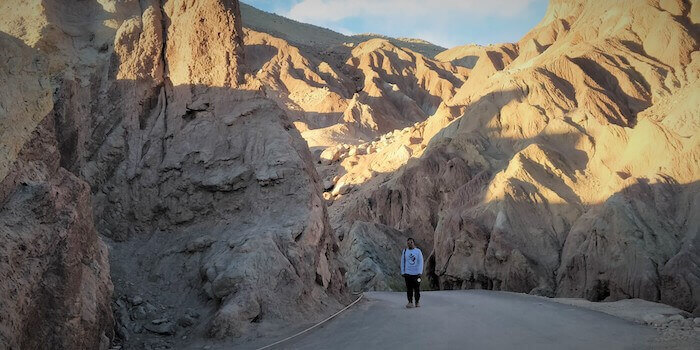
A winding road between huge cliffs and landscapes that can only be described as, “out of the world,” leads to the Basgo monastery and castle ruins, a couple of hairpin bends, and soon we were at our destination. It was a surreal experience as we disembarked from our vehicle and looked towards the white structures atop the cliffs bathed in the afternoon light. We felt as if we had travelled back in time to the medieval period.
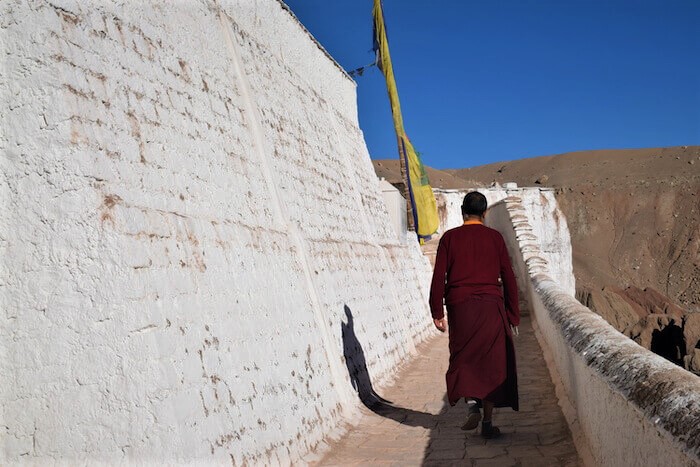
We followed a monk dressed in ochre robes who disappeared around a corner into the white structure that seemed to be a natural extension of the brown hill that framed it.
What To See In Basgo Monastery
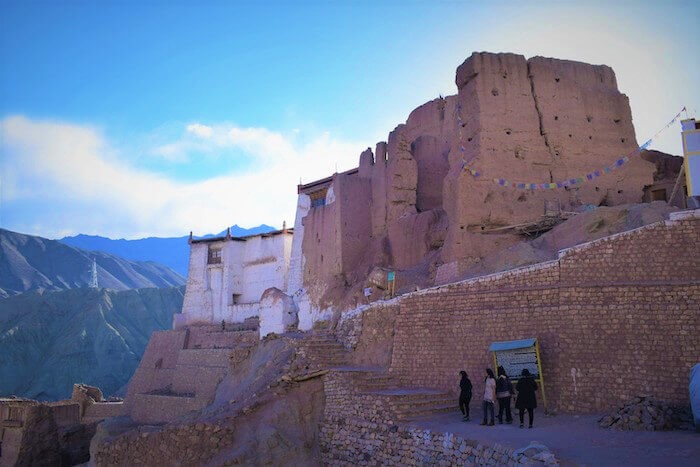
The Basgo Monastery Leh consists of the Basgo Palace and the Basgo Gompa. The palace is in complete ruins and just a pile of rocks and rubble, with some structures rising defiantly from the ruins. But the structures that have survived and can be visited are three temples, all dedicated to Maitreya Buddha. These are at different levels of the monastery and are built on an elevated mound. The facades of the temples are painted brightly in white and house beautiful images of Maitreya Buddha. The walls are covered with frescoes and murals depicting the life of Buddha. The temples that should be visited on your trip to Basgo Ladakh are:
- Chamba Temple | Chamba Lakhang
- Serzang Temple
- Cham Chung Temple
The Chamba Temple In Basgo Monastery
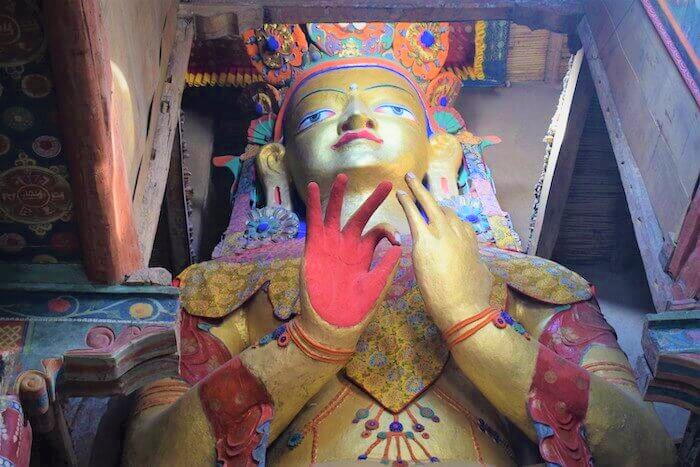
The Chamba temple or Chamba Lakhang is the biggest and the main temple within the Basgo Monastery. The temple is perched on the highest point of the monastery in an alcove set against the walls of the ancient Basgo Fort. The temple is bound by the old fort wall on the northern side, while mud and brick walls on the other sides, complete the temple structure.
A massive stucco idol of the Maitreya Buddha in sitting posture looks down serenely upon us as we enter the semi-dark interiors of the temple. There is a hush inside, and we tread carefully, not wanting to disturb the serenity that envelops the place. The hands of Maitreya Buddha are in the Dharmachakra Mudra which signifies the teaching of the wheel of Dharma.
A board put up by the Basgo Welfare Committee near the entrance of the monastery says that the idol in this temple was installed by King Drakspa Bumde sometime between 1450 and 1490.
The statue is dressed in colourful robes and has a powerful but tranquil aura around it. His legs slightly bent extend out with feet that almost touch the colourful columns that support the roof. The huge statue of the seated Maitreya Buddha rises to a height of about 8 metres into the lantern (top-storey of the tower).
Smaller figures of the Bodhisattvas, Vajrapani and Padmapani, stand on either side of the Maitreya Buddha. A beautiful crown in the form of leaves adorns the head of the Maitreya Buddha who is covered with beautiful ornaments and is brightly painted.
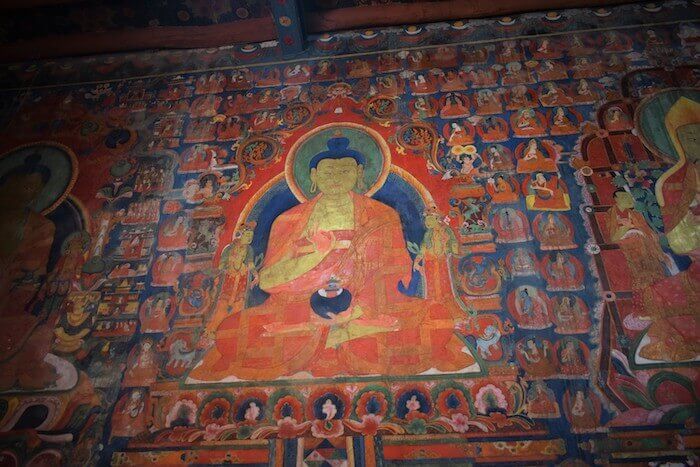
The walls of the Chamba Lakhang are adorned with paintings that have been done with bright colours including gold. The beautiful paintings have survived the test of time and the ravages of nature. These colourful frescoes depict incidents from the Buddha’s life and other Buddhist iconography.
The colourful wall paintings at the Chamba Lakhang are believed to have been commissioned during the reign of King Tsewang Namgyal(1580-1600) one of the prominent rulers of Ladakh.
The Serzang Temple In Basgo Monastery
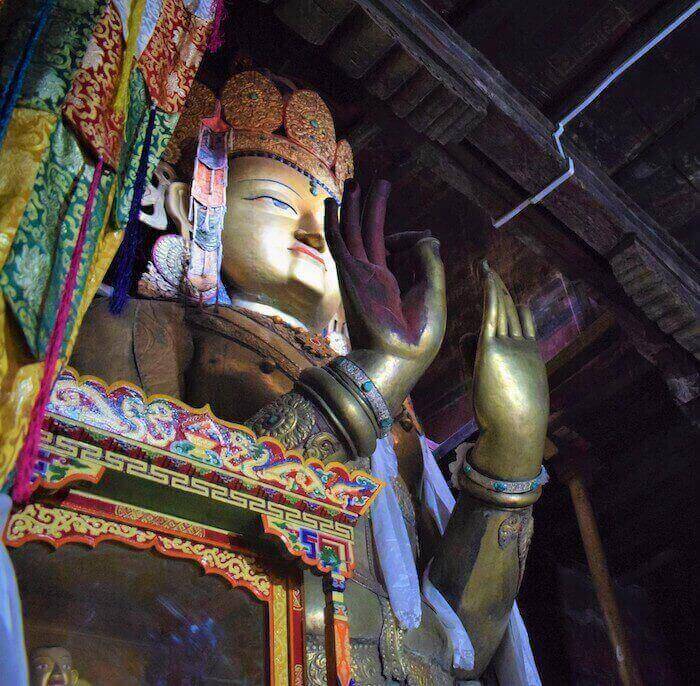
If the Maitreya Buddha at the Chamba Lakhang stuns you with its beauty, the one at the Serzang temple awes you with its magnificence. The Serzang temple stands next to what was once the Royal Palace.
A narrow passage from the temple leads to the Palace, this vouchs for the fact that the Serzang temple was probably meant for the use of the royal family.
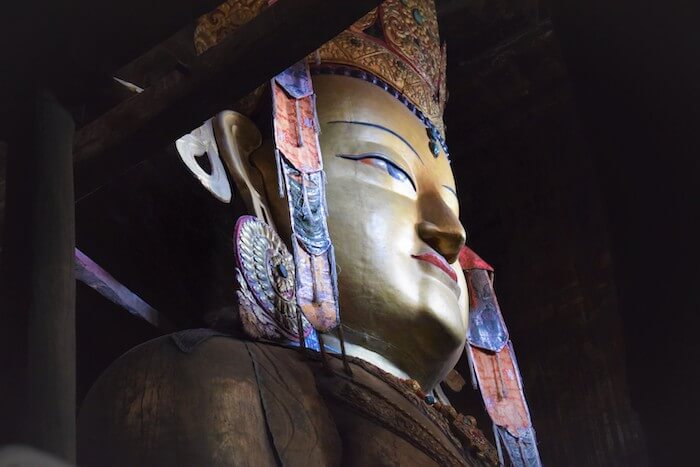
The Maitreya Buddha statue is made of copper and is historically associated with some of the important historical figures of Ladakhi history. The commissioning of the statue has been mentioned in the “Royal Chronicles of Ladakh.” The magnificent statue was a dream of Jamgyal Namgyal, the king of Ladakh, who had wished to have such a grand sculpture in Basgo, he had also wished to have the presence of Stagsan Raspa, a Mahasiddha.
But fate intervened, and he died. His unfulfilled dream saw the light of day later with the help of his son Senge Namgyal who along with his mother, Gyal Khatun commissioned the statue under the guidance of Stagsan Raspa.
The Serzang temple also served as a library and the important religious books of Buddhism including the Kangur and Stangur have been preserved here.
The Cham Chung Temple In Basgo Monastery
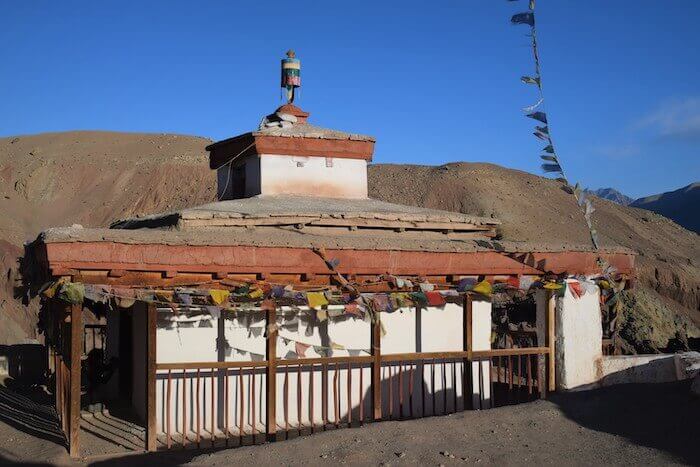
A small temple that stands to one side of an open terrace is the Cham Chung Temple. The exterior of the temple bears a resemblance to a Balti or Central Asian Mosque. Multi-coloured buntings fluttered in the wind, as we ducked inside a small door to enter the Cham Chung temple.
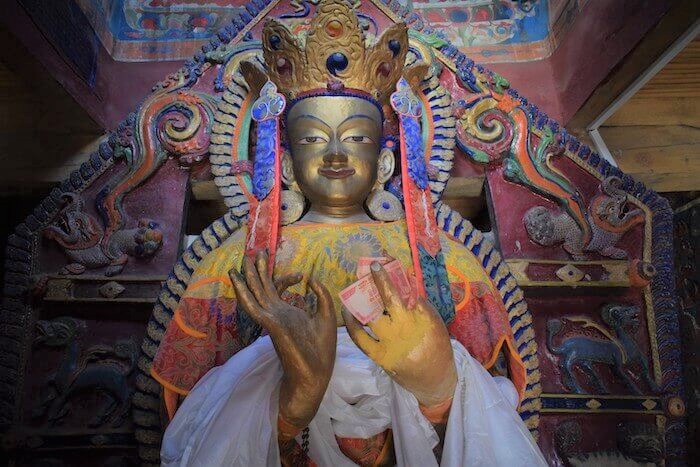
As our eyes adjusted to the light, a colourful image of Maitreya Buddha unveiled itself. After the huge images of the other two temples, this one seemed small. The Maitreya Buddha has a smile on his lips and seems to have a very friendly and gentle demeanour. It comes as no surprise, that this image is known as, “the gentle small one.”
The Maitreya Buddha is seated on a platform, his hands raised in the Dharmachakrapravartana Mudra, which indicates the wheel of Dharma.

The “gentle and small one,” inside the Cham Chung Temple is surrounded by frescoes that depict fierce deities. One can spot the figures of Yamantaka who is the destroyer of Yama-the God of Death. The six-armed Mahakala is also seen on the wall along with others like Chakrasamvara.
The Cham Chung temple is said to have been built originally as a mosque by King Jamyang Namgyal, the son of Tsewang Namgyal, for his Muslim wife, Gyal Khatun whom he had married in exchange for his own freedom after the region was ransacked by Ali Sher Khan Anchan, a famous Balti King. According to legend, Gyal Khatun later adopted the Buddhist faith and practised Buddhism.
History of Basgo Monastery
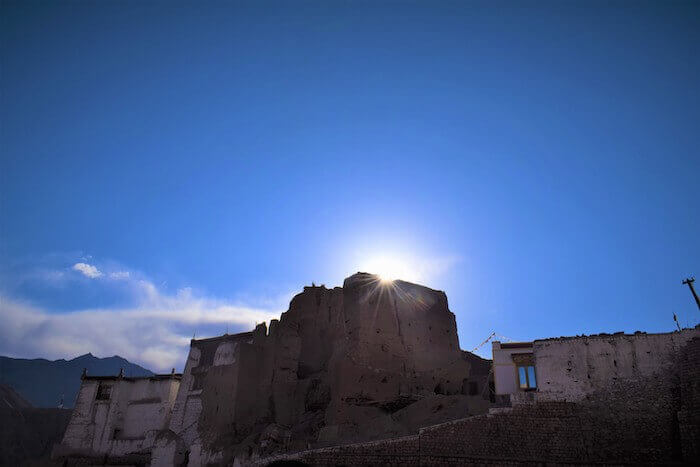
Visiting the Basgo Monastery is an experience in itself. The crumbling monastery and the ruins of what was once the royal palace touch the core of your heart and leave an everlasting impression. The Basgo Monastery figures prominently in the Ladakh Chronicles or La dwags rgyal rabs, the main source of historical information about Ladakh.
Basgo with its natural fortifications was an ideal location and was the centre of power and the capital of the Ladakh kingdom before it fell into decay. It was in the 15th century when Raspa Bum ruled over Ladakh from the village of Shey, that he received Basgo as part of a political settlement with his brother Raspa Bumde. During the reign of Raspa Bum as the Chief of Basgo, it became a centre of activity in the Ladakh Kingdom.
Raspa Bum and his successors ensured that Basgo played an important role in the politics and history of Ladakh. The famous Namgyal dynasty later ruled the Ladakh region and added to the temples of Basgo. Basgo flourished during the rule of Jamyang Namgyal. After his death, his wife Gyal Khatun and son Senge Namgyal continued Basgo’s building activity.
However, the importance of Basgo declined after Senge Namgyal shifted to a new palace in Leh. In the year 1834, the Dogra General Zorawar Singh arrived with his forces from Kashmir. This spelt disaster for the Basgo palace and fort. The forces of the Dogra army went on a rampage and Basgo lay in ruins. Only the three Maitreya Temples remained to tell the world the story of Basgo in its heyday.
Architecture Of Basgo Monastery | Basgo Palace | Basgo Fort
The Basgo Monastery actually consists of the citadel or Basgo Fort (Khar), the royal palace and living quarters, and the religious structures including the Maitreya Buddha temples. Basgo with its natural secure fortifications because of its geological composition was a major deterrent to invading armies. The Basgo Fort Ladakh and much of the complex is essentially in the military architectural style, with emphasis on security.
The Basgo fort during its heyday was a self-contained city that could hold its own against any siege for a long time. Ruins of watch towers amidst the rubble still stand defiantly, a shadow of their past. These watchtowers stood as observation points and the first layer of defence. The fort wall linked the watchtowers and enclosed the settlement inside the citadel. Only portions of the wall can be seen today.
The fort also contained granaries and provided secure access to a water source, ensuring that it was equipped to withstand long sieges. These security features of the Basgo Fort were tested during a three-year siege by the Mongol army.
The Royal palace is believed to have been multi-storeyed and constructed in the Tibetan style. The lower floors were constructed with stone, while timber and mud bricks were used for the upper storeys.
The resurrection of Basgo Monastery From the Brink of Complete Ruins
The Basgo monastery figured in the year 2000 list of World Monuments Watch brought out by the World Monuments Fund. The monastery, the temples, the statues, murals, and the floor were in a precarious condition and were on the verge of annihilation.
But timely intervention and efforts of the Archaeological Survey of India (ASI), Hemis Monastery, World Monuments Fund, and other international agencies engineered a remarkable turnaround. Another factor that proved to be crucial in the restoration of the Basgo ruins was the active involvement of locals who have formed an organisation called the Basgo Welfare Committee. The efforts of all these stakeholders bore fruit, UNESCO presented an award of excellence to the Basgo Welfare Committee in 2007.
Though much of the monastery and the original palace are in ruins, the three temples are conserved beautifully and still function. They are important and sacred places for the followers of the Drukpa Kagyupa order.
Basgo Monastery Location | How To Get To Basgo Monastery
- Basgo Monastery also known as Basgo or Bazgo Gompa is located about 40 kilometres from Leh in the Union Territory of Ladakh
- You can visit the Basgo monastery as a day trip from Leh
- You can hire a cab to take you to Basgo and back to Leh
By Air
The nearest airport to Basgo Monastery is the Kushak Bakula Rimpochee Airport in Leh. There are flights to Delhi, Chandigarh, Jammu, and Srinagar, to and from Leh.
By Rail
The nearest Railway Station to Leh is Jammu, which is about 680 kilometres. Travelling by train is not a very convenient option.
By Road
The Basgo Monastery can be easily reached by road from Leh, as the distance is just 40 kilometres.
If you are planning a visit to the Basgo Monastery, you can book a cheap flight right here through TripAdvisor or CheapAir or Cleartrip or Makemytrip, or Priceline. if you are thinking of a road trip to Leh or Kargil or anywhere in India check out the rental car and bus options.
Where To Stay When Visiting Basgo Monastery
Leh offers many budget and luxury options for your stay. You can stay in Leh and cover many of the best places to visit through day trips, including the Basgo Monastery.
You can book your hotel in Kargil or your hotel in Leh through TripAdvisor or Cleartrip or Makemytrip or Priceline conveniently right here!
| Click to book the best hotels in Kargil, Ladakh, or best hotels in Ladakh |
|---|
Basgo Monastery – FAQ
Basgo Monastery Is based on which tradition?
The Basgo Monastery is based on the Drukpa Kagyupa order.
Basgo Monastery is located in which place?
Basgo Monastery is located near the picturesque Basgo village, some 40 kilometres from Leh, near the Leh-Srinagar Highway.
What is the distance from Leh to Basgo?
The distance from Leh to Basgo Monastery is about 40 kilometres.
How many Buddhist temples are there in Basgo Monastery?
There are 3 Buddhist temples dedicated to Maitreya Buddha in the Basgo Monastery.
The Basgo citadel or rather its remains and the enduring enigma of the three Maitreya Buddha temples stand witness to over 800 years of Ladakhi history. The history of Ladakh is inextricably linked with Buddhism. The ancient silk route which was a conduit not only for the merchandise but also for the dissemination of culture and religion fueled the growth of Buddhism in the region. It is believed that Buddhism came to Ladakh from Kashmir, the 7th century Maitreya Buddha statues of Kargil stand testimony to this.
The setting sun cast a surreal glow over the ruins of Basgo, as we left the historic castle and Buddhist Monastery behind, a young monk waved to us, an angelic smile lighting up his face. That smiling face and the mesmerizing images of Basgo Monastery continue to haunt us to this day.
If you are interested in Buddhism and the Buddha, then you are sure to find these posts interesting.
Lumbini – Birthplace of Buddha
On The Trail Of The Buddha in Bodh Gaya
Significance of Buddha Purnima
Buddha Quotes on Happiness
Sanch Stupa – A Timeline of Buddhism
Sanchi Museum
Below are some useful resources to help you book flights, hotels, and tours! And also clothes, luggage and accessories for your trip!
Flights – TripAdvisor or CheapAir or Cleartrip or Makemytrip or Priceline
Tours – Click here to book top tours around the world
Hotels – Click to book the best hotels/resorts
Choose best stay options with TripAdvisor or Cleartrip or ixigo or Makemytrip or goibibo or Hotelscombined or Priceline
Apparels – Click to buy Menswear or Womenswear or Kidswear
Accessories/Luggage – Click to buy Accessories and Luggage items
Beauty Products – Click to buy Personal Care and Beauty Products
Do You Love Traveling?
Do you want to know how to travel the world? We have put together a very useful travel resources page with the best travel tips. Go check it out now.
Thanks for visiting our site Voyager – imvoyager.com and taking the time to read this post!
If you wish to collaborate/work with us then reach us at [email protected]
We’d love it if you’d comment by sharing your thoughts on this post and share this post on social media and with your friends.
Follow our journey on our social media channels:
Facebook Twitter Instagram Pinterest YouTube
60+ Million Users Trust TripAdvisor With Their Travel Plans. Shouldn’t You?
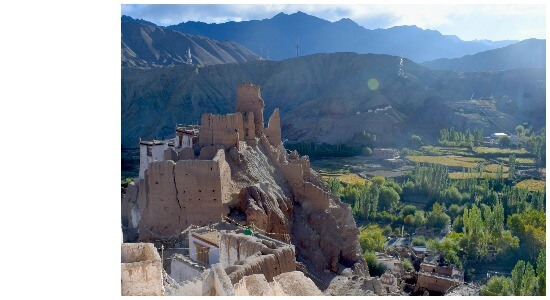
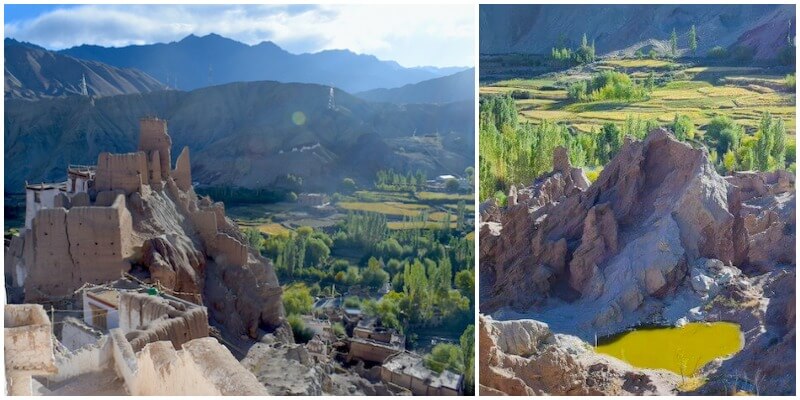

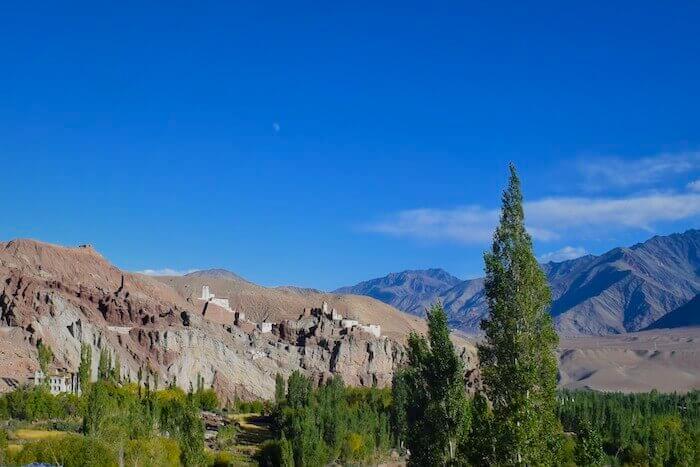
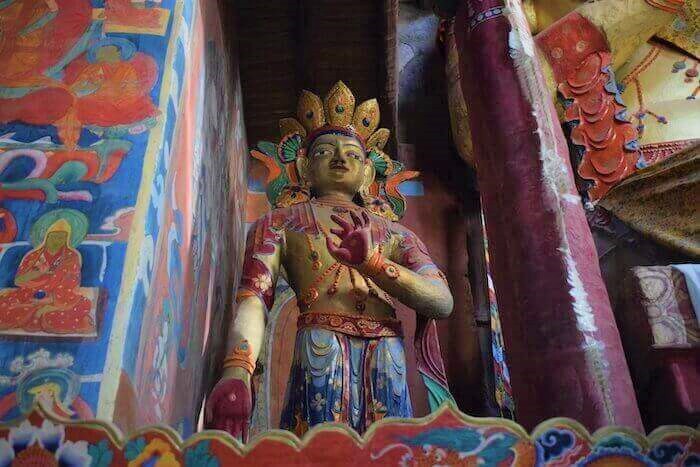
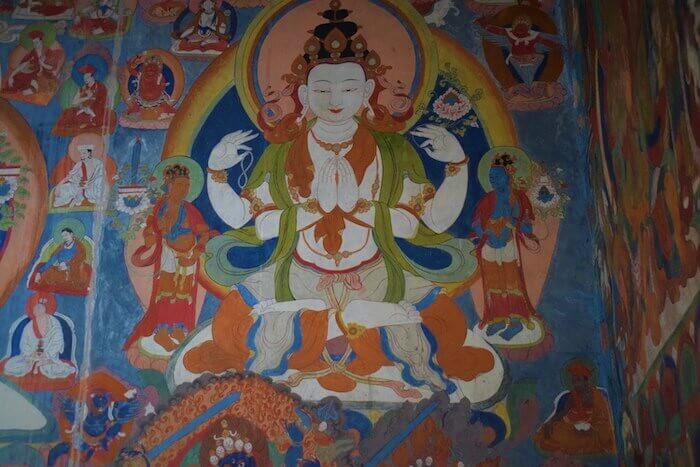


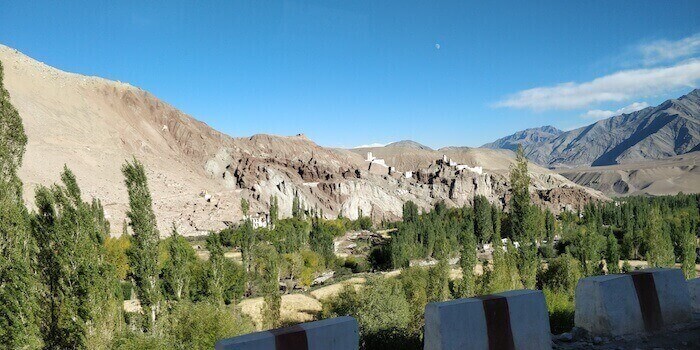
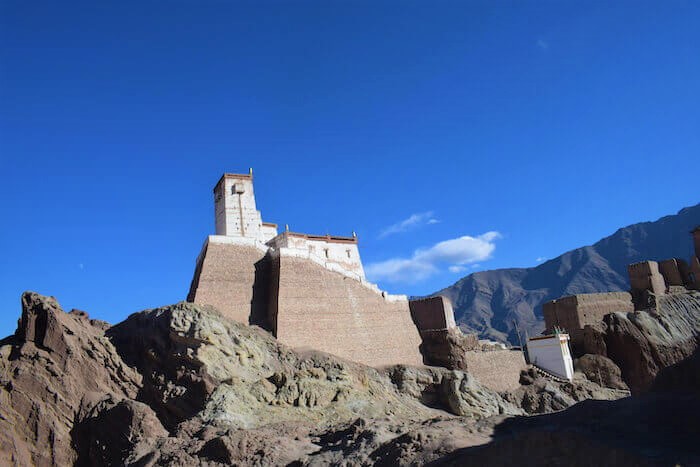
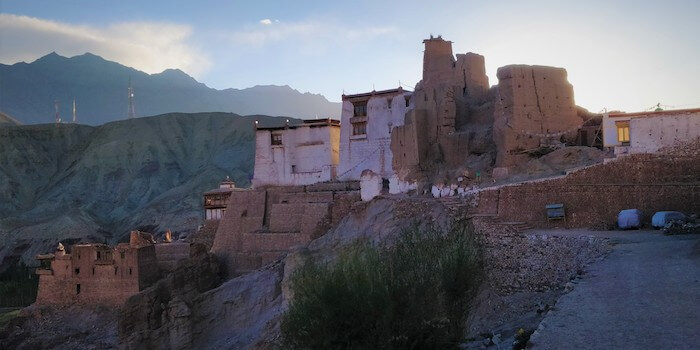
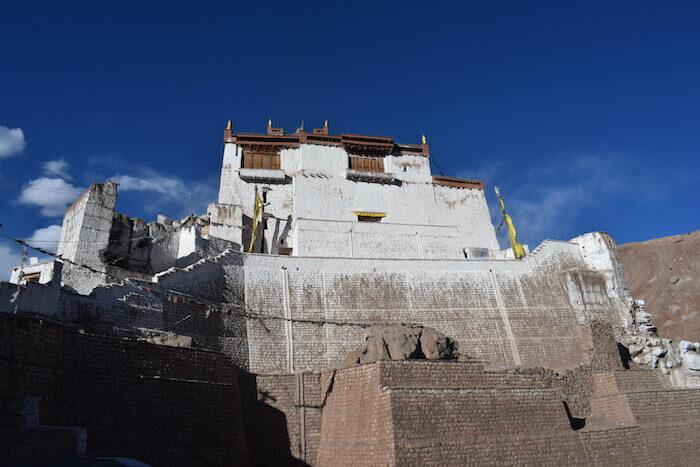
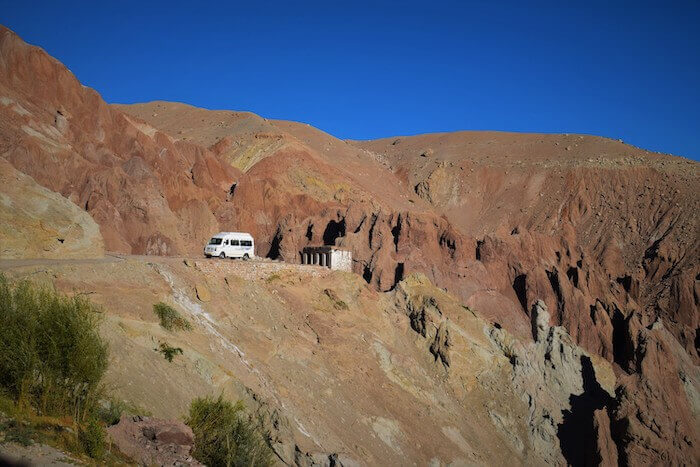
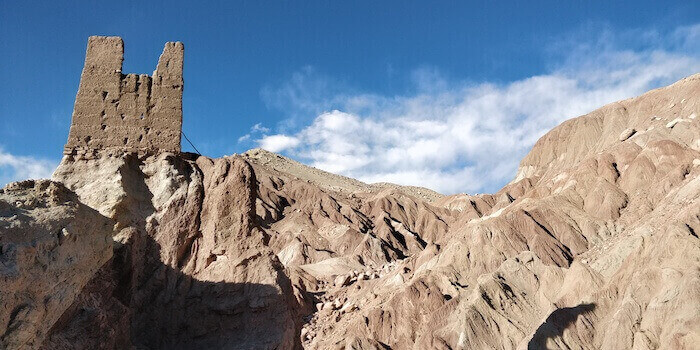


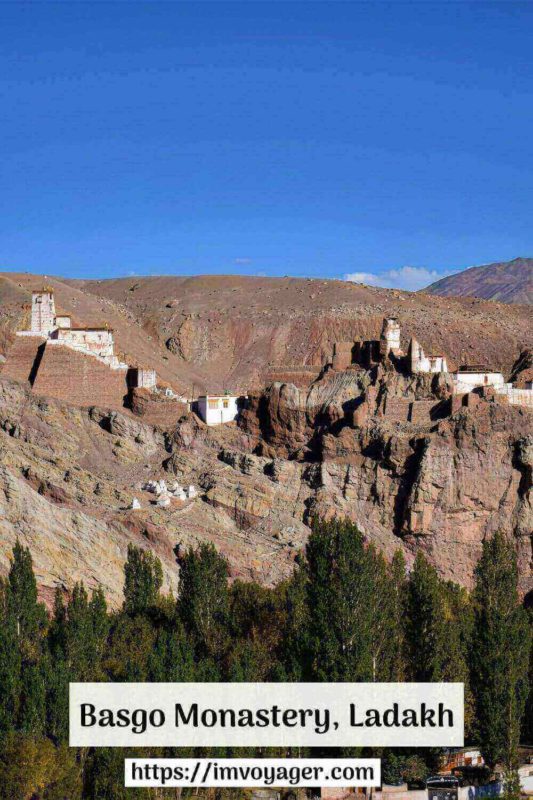

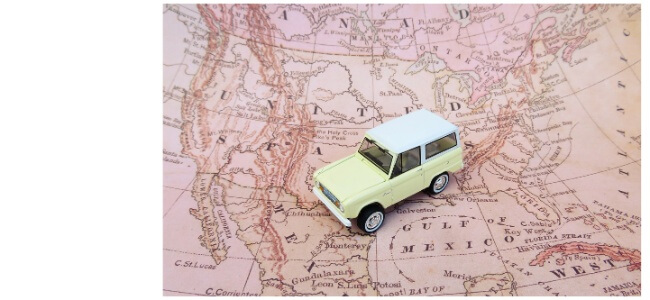

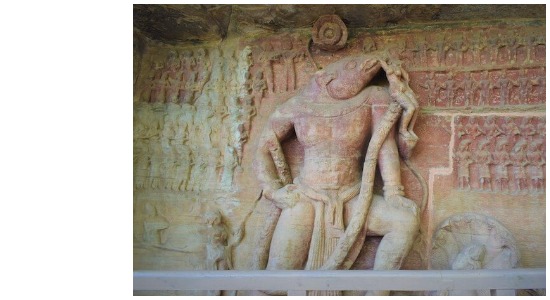
wow that is an in-depth post. Everything sounds so serene. I haven’t visited many monasteries but have visited a few Budhha temple. The ambience is so calm and pure that one cannot come out without feeling positivity and divinity . I am sure your experience visiting the Basko Monastery must be filled with such serenity.
This place looks so beautiful and after reading your post I am so curious to visit this place as soon as possible. This will be my travel partner for sure.
I had never been to ladakh or near by places. your recent posts has made me so curios to visit this amazing place with my family. basgo monastery and all three temples are looking so amazing. the architecture is really impressive. thanks for sharing all important details.
Leh is in my bucket list for way too long. Hopefully when things are little better probably next year, would visit for sure. Thanks for sharing such a detailed post.
I have heard many things about Ladakh. But never got to visit. Your posts are always so helpful for someone who loved travel. Thnaks for this share
Absolutely stunning place, and off the beaten track. Spectacular scenery, with the brown and green vegetation, pools of water, and the ruins of the abandoned Basgo town jutting out.
Such places have my heart buddy but have been unfortunate enough not to be able to go visit them myself but it is such a pleasure knowing them through your blog and podcast.
Wow basgo monastery looks magnificent. Especially that of maitreya Buddha and the pathways. Love the captures. Would love to visit one day.
Basgo Monastery is a hidden gem in Ladakh and I wish to visit the site next year, as I spiritually inclined towards Buddhism. On a separate note, I am surprised at how many offbeat places you’ve managed to visit in your lifetime. Do you get paid to write about these places or do you only travel for passion? Curious to know your response.